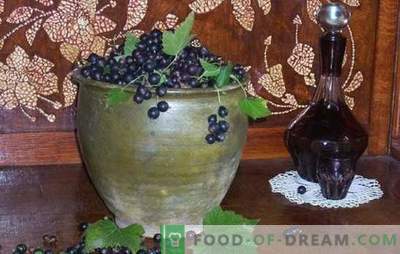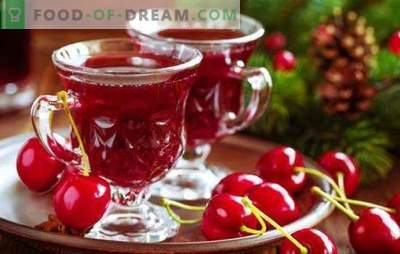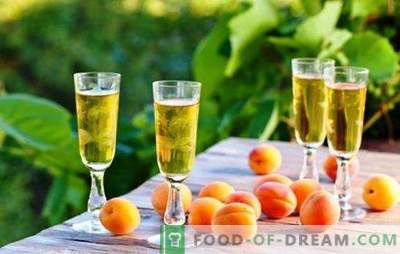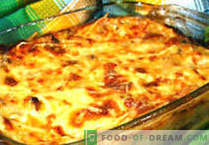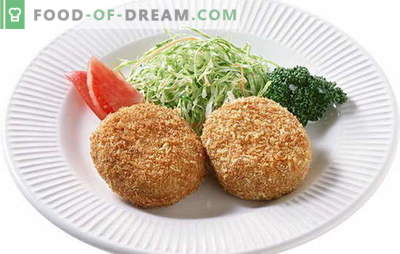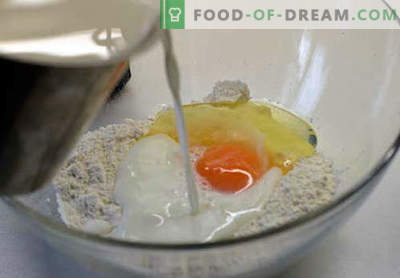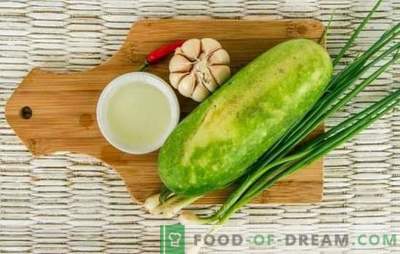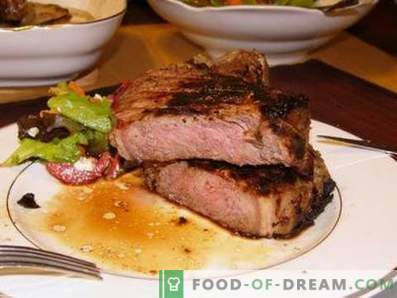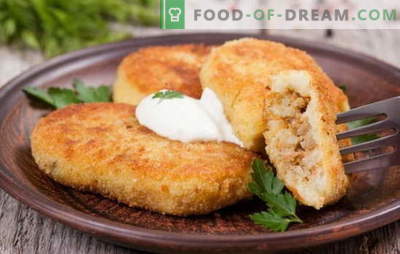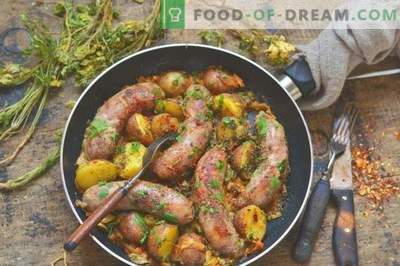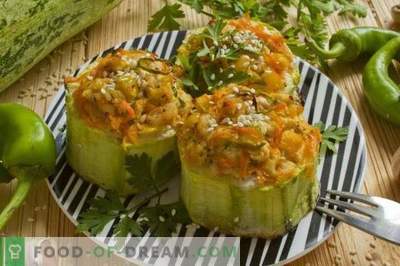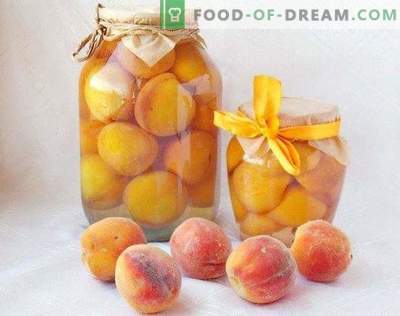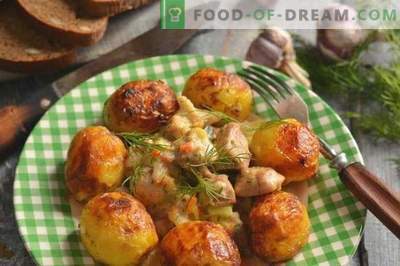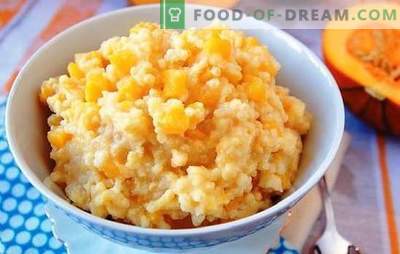
Grape wines are considered the most noble and exquisite wines. Their bouquet depends on many parameters: variety, place of growth and degree of maturity of the berries, the amount of sugar, other ingredients, cooking technology and even various random factors. Because of this, it is impossible to produce vintage wines at home, moreover - wine from grapes at home is different every day. However, whatever the bouquet of homemade grape drink is, it is guaranteed to be better than that of cheap store wines (and a good grape wine is expensive). At the same time the wine made at home is no less useful than the purchased one.
Technology Features
The production of grape wines has its own characteristics, which the winemaker must know about, so as not to ruin the drink.
- Not all grape varieties are suitable for winemaking. Beautiful large berries of table varieties are pleasant to the taste, but they are not suitable for the production of wines: the wine of them turns out to be unstable, with a slightly pronounced aroma, devoid of a noble aftertaste. Small clusters, dotted with small, closely-fitting berries, - this is usually how the grapes of wine-growing varieties look. The names of these varieties are well known: Chardonnay, Cabernet, Riesling, Merlot, Lydia, Isabella and others. They have the necessary sugar content and acidity, give the drink a rich aroma, deep taste, delicate aftertaste.
- The time of harvesting grapes for wine depends on the region of its growth and on the weather conditions prevailing in a particular season. It is important that the berries were as ripe as possible. However, only ripe berries can be used for dry wine, and for dessert wines they can even be used a little longer.
- Grapes for wine should be harvested in the morning, on a sunny day, but only after the dew is completely gone. In rainy and foggy weather, in the evening and at dawn grapes are not harvested. For wine, it is necessary that it was dry.
- You cannot wash grapes. Whitish plaque on it is a yeast, without which fermentation of the wort would not be possible. They need to be saved. In addition, no additional yeast can be added to the wort. However, an insignificant amount of pure culture yeast or sediment already fermenting good wine is not forbidden, and this is why: the yeast is different, and they may have a conflict, and the addition of wine yeast will ensure the victory of exactly those species that are needed for good fermentation.
- Nutrient medium for yeast bacteria is sugar, which in the grapes themselves is not always enough. In wine-growing regions, grapes can still have the required amount of sugar in the composition, but in the central regions the sugar content of grapes is no more than 20%, whereas for the production of wine you need at least 25%. Therefore, sugar is added at the rate of 50-250 g per liter. The larger it is, the sweeter and stronger the finished drink will be. Interestingly, white grapes are usually less sweet than red, so it is more suitable for preparing table wines.
- In order to prevent wort contamination, it is necessary to use only clean and dry dishes. Experienced winemakers have several glass bottles of 10 or 20 liters for this purpose. Initial fermentation can be carried out in enameled containers, as well as in stainless steel vessels. Dairy products containers are not suitable.
- The optimum temperature for fermentation is 22-26 degrees for red wine, 18-22 degrees for white. At higher temperatures, the process will be too turbulent, at lower temperatures it will stop.
- Fermentation of grape wine goes through several stages: intensive takes 21-28 days, quiet - from one and a half months to a year, post-fermentation (or ripening) - from two months to three years.
The remaining details of the technology and the sequence of making wine from grapes at home should be considered with specific examples.
Red table wine from grapes: a universal recipe
Composition:
- grapes - 10 kg;
- granulated sugar - 1, 5 kg,
- pure culture wine yeast (optional) - 1-2 g.
Method of preparation:
- Carefully sort the collected berries - no rotten must get into the wort. Separate the grapes from the ridges (as wine-makers call grapes brush branches). Throw out the immature.
- Mash selected grapes with clean hands or wooden pestle. Cookware, with the help of which manipulations are performed, should not be aluminum or copper. Naturally, cleanliness must be observed: the dust on the grapes will then settle, but from pathogenic microorganisms, if they get into the drink, it will not work to get rid of. When kneading, make sure that each grape is crushed, but you do not need to crush the bones: they will give the drink a bitter taste. Better get to knead the berries, if you take them in small portions.
- Put all the kneaded berry together with the juice that stood out from it, put it in an enamelled bucket or basin. Pour 0, 5 kg of sugar, mix, cover with gauze and put to ferment at a temperature of 22 to 26 degrees. At the same stage, you need to add wine yeast, if you decide to use them. Stir the juice as often as possible, heating the pulp - this simple action will protect the wort from souring. Oxygen will start active fermentation.
- After three days, carefully pour the juice into a clean container, while pouring the juice pressed from the mash through a sieve with gauze into it. Add a glass of sugar, dissolving it in a small amount of juice. Drain everything into a clean bottle. Install a water seal on it. This device usually looks like a thin rubber tube that goes down into a container with water. Making it at home with his own hands, winemakers often use tubes for droppers. However, in the wine shops you can find a ready-made design. It is intended to block the access of air to the wort, but it does not prevent the release of carbon dioxide formed during fermentation. The most budgetary analog of a water lock is a rubber glove with a punctured finger.
- On the fourth day, pour a glass of wort through a straw into a bowl: if one end of the straw is placed in the wort and the other is lowered, the liquid will flow along it, following the laws of physics. In the wort, dissolve the sugar in the amount of 0, 25 kg and pour the syrup back into the fermentation tank. Put the water seal in place.
- On the seventh and tenth days, repeat this procedure.
- Wait until the end of rapid fermentation. It will happen at 20-30 days. On the second day after the water seal has stopped gurgling, pour the wine into a clean container through the same tube, without lowering it to the very sediment (leave a minimum of two centimeters before it): it’s better to get less wine but good.
- At this stage, the wine can be sweetened or fixed, although in the case of table grape wines, this is usually not done. For this reason, neither sugar nor alcohol in the recipe is provided.
- Close the bottle tightly and leave it in a cool room (16-20 degrees) until the wine is completely clarified. The quality of the drink will be higher if once a month it is drained, freeing from sediment, into a clean bottle. The clarification process is long, takes from two to ten months. The longer the period for which you leave the wine to lighten, the more beautiful and tastier it will be. Some accelerate the process of clarification artificially, adding egg white, but experts say that this does not affect the organoleptic qualities of the drink. Another way is sterilization: the bottles are filled with wine, loosely sealed, wrapped in cloth, put in a high saucepan, pouring water over the hanger, heated to 60 degrees. This temperature is enough for the yeast to die and fermentation ceases. However, in this case it will also be necessary to pour the wine several times into other bottles, separating it from the sediment. In addition, there is a risk of overheating or underheating the drink. Therefore, it is better to be patient and wait until the clarification is completed naturally.
- After clarification, the wine is filtered and bottled. They are laid horizontally. Store at a temperature of 12-16 degrees.
Bottled young wine can already be drunk, but it is better to let it ripen after waiting for at least six months. During this time, it will acquire a deeper taste, its aroma will be thinner. When preparing for the specified recipe should get a semi-sweet table wine. If necessary, get dry sugar should be added at each stage in half. It is assumed that the dry wine is completely fermented, sugar in it should remain no more than one percent.
Homemade Isabella Wine
Composition:
- Isabella grapes - 10 kg;
- sugar - 3 kg;
- water - 1 l.
Method of preparation:
- Enumerated, but unwashed berries, separating them from the ridge, mash.
- Prepare a syrup from 1 kg of sugar and 1 liter of pure water. Typically, water is not added to grape wines, as this lowers their durability, however, Isabella grapes collected in central Russia have high acidity, so it is necessary to dilute it with water, albeit in minimal amounts.
- After cooling the syrup to room temperature (it should be no hotter than 38 degrees, so as not to kill live yeast, but better even cooler), pour in the grape mass. Cover the container with it with a thin cloth that does not interfere with the access of oxygen, put it in a warm place to start fermentation. Every 8 hours, mix, so that the pulp is not moldy and soured.
- After three days, filter the grape juice, squeeze the pulp and, adding 0.5 kg of sugar, pour it into the fermentation bottle. Install a water seal on it.
- On the 4th, 7th and 10th days of fermentation, pour 0.5 l of wort by each, mix 0.5 kg of sugar with it and pour it back into the bottle with the wort.
- After fermentation, separate the wine from the sediment, filter it, put it in a cooler room for quiet fermentation.
- After three months, drain the wine, freeing it from sediment, double-filter and bottle, closing them tightly.
Wine will mature only six months later, and you will be able to appreciate its taste. According to this recipe you will get a sweet wine with a strength of about 12-14 degrees. Serve it as a dessert.
Homemade white grape wine
Composition:
- white grapes - 10 kg;
- sugar - 2-2, 5 kg.
Method of preparation:
- Mash the berries, add 0, 8 kg of sugar, cover with gauze and put in heat. Do not forget to stir three times a day.
- After three days, pour the juice into a fermenting bottle, squeeze the pulp, placing it in a gauze folded in several layers, add the resulting juice to its first portion. Pour in 0, 3 kg of sugar, establish a hydrolock.
- Every three to four days, add three times the amount of sugar in the amount of 0.3 kg, mixing it with a small amount of wort poured from the bottle.
- After completing the rapid fermentation, wait 2 days and drain the wine, separating the sediment from it, filter and taste a small amount. Decide whether you have a sufficiently sweet drink. If you want to get a better wine, dissolve some more sugar in it, but not more than 0.5 kg. Fill in a clean bottle, install a water seal.
- After two weeks, drain the wine again, separating it from the sediment, strain it, and pour it back into a clean bottle. Close it tightly and transfer to a cool place. Within six months, pour out the wine every month, freeing it from sediment, and filter.
- After half a year, pour the drink into bottles, seal it and send it to a cool corner.
It is possible to serve white wine not earlier than six months after bottling. The longer it lies, the more noble it becomes.
There are different opinions on how difficult or just to make wine from grapes at home. You can learn only by trying. If you take into account important features and accurately follow the recipe, the result will meet the expectations.



